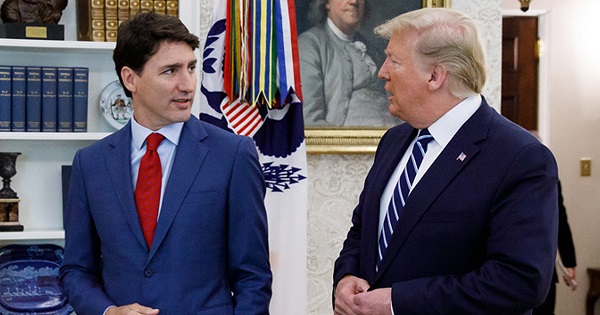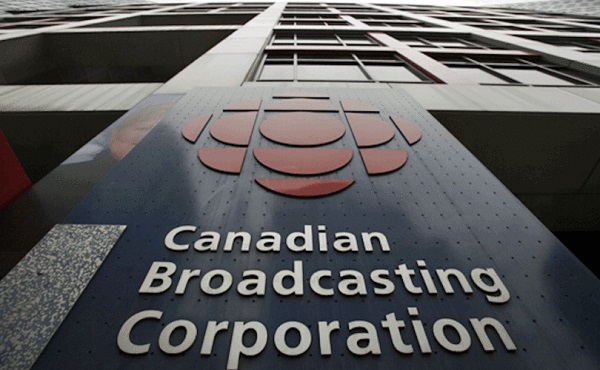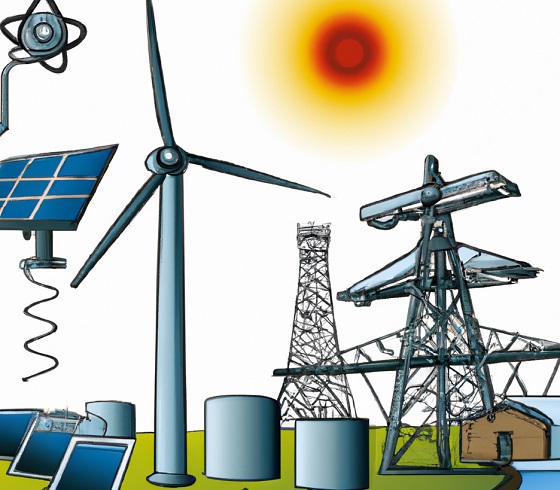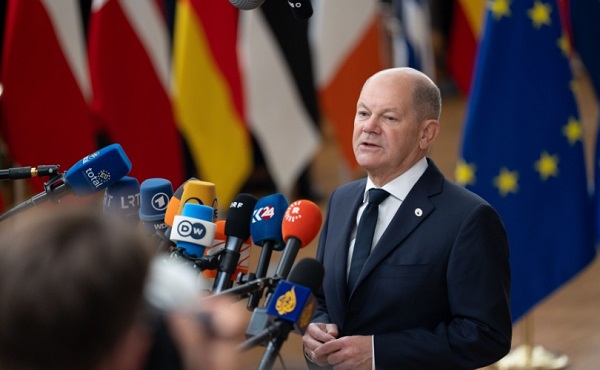Alberta
Province pumping up support for growing school enrolment

Supporting more students in classrooms
Budget 2023 provides more than $820 million over the next three years to support enrolment growth in schools.
Based on strong population growth in Alberta, a large increase in student enrolment is expected in September 2023.
“With Alberta’s rising population, we know many school authorities across the province continue to face growing enrolment pressures. Our strong funding commitment in Budget 2023 will empower school authorities to hire more teachers and obtain more resources for students.”
Over the next three years, Education’s operating expense is increasing by nearly $2 billion. This will support the hiring of approximately 3,000 education staff, including teachers, educational assistants, bus drivers and school support staff, and will help authorities manage growing class sizes.
Funding increases for enrolment will be provided to school authorities through existing grants that include enrolment components. This includes the Early Childhood Services and Grades 1-9 Base Instruction grant and the High School (Grades 10-12) Base Instruction grant, as well as grants in the services and supports category, such as Specialized Learning Support, English as an Additional Language, and Program Unit Funding. The Operations and Maintenance grant also includes an enrolment component. The flexible funding provided allows local authorities to make decisions on how to best use the funding to support their students.
The Funding Manual for School Authorities 2023/24 School Year and projected operational funding profiles are being released March 9, providing school authorities with their funding information for the coming year.
“ASBA is pleased that government has been responsive to school boards’ requests for early release of the funding manual and operational funding profiles, as it assists in informed decision-making. Government’s investment in enrolment growth is welcome news as boards address the growing, diverse and complex student needs within their divisions while remaining accountable to their communities.”
“This funding announcement is timely and much appreciated. In the 2022-23 school year, enrolment at the Calgary Board of Education has grown by more than 5,800 students and we are projecting another significant increase next year. This investment means we can hire additional teachers, educational assistants and other staff to support our growing student population.”
“As one of the fastest-growing school divisions in the province, the funds provided for enrolment growth will help Rocky View Schools hire more staff to support the 1,000 new students we will welcome in the fall. Knowing additional funding will be available is positive news, as RVS continues to experience increasing enrolment pressures across the division.”
“The CASS board of directors recognizes the importance of supporting enrolment growth while maintaining sustainable support for all boards. The early release of the funding manual will assist school authorities in initiating planning needs for the 2023-24 school year.”
“The investment in enrolment growth of Budget 2023 and other increases in grants are most welcome and will greatly help school authorities face significant challenges including high inflation and labour shortage. The association also appreciates the timeliness of the release of the funding manual and recognizes the extraordinary work of the department staff to make this possible.”
Budget 2023 secures Alberta’s future by transforming the health-care system to meet people’s needs, supporting Albertans with the high cost of living, keeping our communities safe and driving the economy with more jobs, quality education and continued diversification.
Quick facts
- Last fall, the government announced a new supplemental enrolment growth grant that provided school authorities with more than $21 million in additional funding. This grant will continue to be available in the 2023-24 school year.
- Alberta Education introduced the Supplemental Enrolment Growth (SEG) grant in the 2022-23 school year to support school authorities with significant enrolment growth.
- The SEG grant provided additional per-student funding for authority enrolment growth of more than two per cent in the 2022-23 school year. The SEG grant, in addition to weighted moving average-based allocations, will provide additional funding to school authorities that have significant growth.
- Over the next three years, the government will provide school authorities with more than $820 million in additional funding to support enrolment growth.
- In the 2020-21 school year, school boards were funded for about 730,000 students and actual attendance was 705,000.
- In the 2021-22 school year, school boards were funded for about 730,000 students and attendance was about 716,000.
- The robust financial health of school jurisdictions continues to be demonstrated by taxpayer funded reserves, reported to be $407 million as of Aug. 31, 2022.
Alberta
Free Alberta Strategy trying to force Trudeau to release the pension calculation


Just over a year ago, Alberta Finance Minister Nate Horner unveiled a report exploring the potential risks and benefits of an Alberta Pension Plan.
The report, prepared by pension analytics firm LifeWorks – formerly known as Morneau Shepell, the same firm once headed by former federal Finance Minister Bill Morneau – used the exit formula outlined in the Canada Pension Plan Act to determine that if the province exits, it would be entitled to a large share of CPP assets.
According to LifeWorks, Alberta’s younger, predominantly working-class population, combined with higher-than-average income levels, has resulted in the province contributing disproportionately to the CPP.
The analysis pegged Alberta’s share of the CPP account at $334 billion – 53% of the CPP’s total asset pool.
We’ve explained a few times how, while that number might initially sound farfetched, once you understand that Alberta has contributed more than it’s taken out, almost every single year CPP has existed, while other provinces have consistently taken out more than they put in and technically *owe* money, it starts to make more sense.
But, predictably, the usual suspects were outraged.
Media commentators and policy analysts across the country were quick to dismiss the possibility that Alberta could claim such a significant portion. To them, the idea that Alberta workers had been subsidizing the CPP for decades seemed unthinkable.
The uproar prompted an emergency meeting of Canada’s Finance Ministers, led by now-former federal Finance Minister Chrystia Freeland. Alberta pressed for clarity, with Horner requesting a definitive number from the federal government.
Freeland agreed to have the federal Chief Actuary provide an official calculation.
If you think Trudeau should release the pension calculation, click here.
Four months later, the Chief Actuary announced the formation of a panel to “interpret” the CPP’s asset transfer formula – a formula that remains contentious and could drastically impact Alberta’s entitlement.
(Readers will remember that how this formula is interpreted has been the matter of much debate, and could have a significant impact on the amount Alberta is entitled to.)
Once the panel completed its work, the Chief Actuary promised to deliver Alberta’s calculated share by the fall. With December 20th marking the last day of fall, Alberta has finally received a response – but not the one it was waiting for:
“We received their interpretation of the legislation, but it did not contain a number or even a formula for calculating a number,” said Justin Brattinga, Horner’s press secretary.
In other words, the Chief Actuary did the complete opposite of what they were supposed to do.
The Chief Actuary’s job is to calculate each province’s entitlement, based on the formula outlined in the CPP Act.
It is not the Chief Actuary’s job to start making up new interpretations of the formula to suit the federal government’s agenda.
In fact, the idea that the Chief Actuary spent all this time working on the issue, and didn’t even calculate a number is preposterous.
There’s just no way that that’s what happened.
Far more likely is that the Chief Actuary did run the numbers, using the formula in the CPP Act, only for them – and the federal government – to realize that Alberta’s LifeWorks calculation is actually about right.
Cue panic, a rushed attempt to “reinterpret” the formula, and a refusal to provide the number they committed to providing.
In short, we simply don’t believe that the Chief Actuary didn’t, you know, “actuarialize” anything.
For decades, Alberta has contributed disproportionately to the CPP, given its higher incomes and younger population.
Despite all the bluster in the media, this is actually common sense.
A calculation reflecting this reality would not sit well with other provinces, which have benefited from these contributions.
By withholding the actual number, Ottawa confirms the validity of Alberta’s position.
The refusal to release the calculation only adds fuel to the financial firestorm already underway in Ottawa.
Albertans deserve to know the truth about their contributions and entitlements.
We want to see that number.
If you agree, and want to see the federal government’s calculation on what Alberta is owed, sign our petition – Tell Trudeau To Release The Pension Calculation:
Once you’ve signed, send this petition to your friends, family, and all Albertans.
Thank you for your support!
Regards,
The Free Alberta Strategy Team
Alberta
Ford and Trudeau are playing checkers. Trump and Smith are playing chess

By Dan McTeague
Ford’s calls for national unity – “We need to stand united as Canadians!” – in context feels like an endorsement of fellow Electric Vehicle fanatic Trudeau. And you do wonder if that issue has something to do with it. After all, the two have worked together to pump billions in taxpayer dollars into the EV industry.
There’s no doubt about it: Donald Trump’s threat of a blanket 25% tariff on Canadian goods (to be established if the Canadian government fails to take sufficient action to combat drug trafficking and illegal crossings over our southern border) would be catastrophic for our nation’s economy. More than $3 billion in goods move between the U.S. and Canada on a daily basis. If enacted, the Trump tariff would likely result in a full-blown recession.
It falls upon Canada’s leaders to prevent that from happening. That’s why Justin Trudeau flew to Florida two weeks ago to point out to the president-elect that the trade relationship between our countries is mutually beneficial.
This is true, but Trudeau isn’t the best person to make that case to Trump, since he has been trashing the once and future president, and his supporters, both in public and private, for years. He did so again at an appearance just the other day, in which he implied that American voters were sexist for once again failing to elect the nation’s first female president, and said that Trump’s election amounted to an assault on women’s rights.
Consequently, the meeting with Trump didn’t go well.
But Trudeau isn’t Canada’s only politician, and in recent days we’ve seen some contrasting approaches to this serious matter from our provincial leaders.
First up was Doug Ford, who followed up a phone call with Trudeau earlier this week by saying that Canadians have to prepare for a trade war. “Folks, this is coming, it’s not ‘if,’ it is — it’s coming… and we need to be prepared.”
Ford said that he’s working with Liberal Finance Minister Chrystia Freeland to put together a retaliatory tariff list. Spokesmen for his government floated the idea of banning the LCBO from buying American alcohol, and restricting the export of critical minerals needed for electric vehicle batteries (I’m sure Trump is terrified about that last one).
But Ford’s most dramatic threat was his announcement that Ontario is prepared to shut down energy exports to the U.S., specifically to Michigan, New York, Wisconsin, and Minnesota, if Trump follows through with his plan. “We’re sending a message to the U.S. You come and attack Ontario, you attack the livelihoods of Ontario and Canadians, we’re going to use every tool in our toolbox to defend Ontarians and Canadians across the border,” Ford said.
Now, unfortunately, all of this chest-thumping rings hollow. Ontario does almost $500 billion per year in trade with the U.S., and the province’s supply chains are highly integrated with America’s. The idea of just cutting off the power, as if you could just flip a switch, is actually impossible. It’s a bluff, and Trump has already called him on it. When told about Ford’s threat by a reporter this week, Trump replied “That’s okay if he does that. That’s fine.”
And Ford’s calls for national unity – “We need to stand united as Canadians!” – in context feels like an endorsement of fellow Electric Vehicle fanatic Trudeau. And you do wonder if that issue has something to do with it. After all, the two have worked together to pump billions in taxpayer dollars into the EV industry. Just over the past year Ford and Trudeau have been seen side by side announcing their $5 billion commitment to Honda, or their $28.2 billion in subsidies for new Stellantis and Volkswagen electric vehicle battery plants.
Their assumption was that the U.S. would be a major market for Canadian EVs. Remember that “vehicles are the second largest Canadian export by value, at $51 billion in 2023 of which 93% was exported to the U.S.,”according to the Canadian Vehicle Manufacturers Association, and “Auto is Ontario’s top export at 28.9% of all exports (2023).”
But Trump ran on abolishing the Biden administration’s de facto EV mandate. Now that he’s back in the White House, the market for those EVs that Trudeau and Ford invested in so heavily is going to be much softer. Perhaps they’d like to be able to blame Trump’s tariffs for the coming downturn rather than their own misjudgment.
In any event, Ford’s tactic stands in stark contrast to the response from Alberta, Canada’s true energy superpower. Premier Danielle Smith made it clear that her province “will not support cutting off our Alberta energy exports to the U.S., nor will we support a tariff war with our largest trading partner and closest ally.”
Smith spoke about this topic at length at an event announcing a new $29-million border patrol team charged with combatting drug trafficking, at which said that Trudeau’s criticisms of the president-elect were, “not helpful.” Her deputy premier Mike Ellis was quoted as saying, “The concerns that president-elect Trump has expressed regarding fentanyl are, quite frankly, the same concerns that I and the premier have had.” Smith and Ellis also criticized Ottawa’s progressively lenient approach to drug crimes.
(For what it’s worth, a recent Léger poll found that “Just 29 per cent of [Canadians] believe Trump’s concerns about illegal immigration and drug trafficking from Canada to the U.S. are unwarranted.” Perhaps that’s why some recent polls have found that Trudeau is currently less popular in Canada than Trump at the moment.)
Smith said that Trudeau’s criticisms of the president-elect were, “not helpful.” And on X/Twitter she said, “Now is the time to… reach out to our friends and allies in the U.S. to remind them just how much Americans and Canadians mutually benefit from our trade relationship – and what we can do to grow that partnership further,” adding, “Tariffs just hurt Americans and Canadians on both sides of the border. Let’s make sure they don’t happen.”
This is exactly the right approach. Smith knows there is a lot at stake in this fight, and is not willing to step into the ring in a fight that Canada simply can’t win, and will cause a great deal of hardship for all involved along the way.
While Trudeau indulges in virtue signaling and Ford in sabre rattling, Danielle Smith is engaging in true statesmanship. That’s something that is in short supply in our country these days.
As I’ve written before, Trump is playing chess while Justin Trudeau and Doug Ford are playing checkers. They should take note of Smith’s strategy. Honey will attract more than vinegar, and if the long history of our two countries tell us anything, it’s that diplomacy is more effective than idle threats.
Dan McTeague is President of Canadians for Affordable Energy.
-

 Business2 days ago
Business2 days agoThe CBC gets $1.4 billion per year, but the Trudeau government wants to give it more
-

 conflict2 days ago
conflict2 days agoSending arms to Ukraine is unnecessarily placing American lives in danger
-

 Energy2 days ago
Energy2 days agoGuilbeault’s Emissions Obsession: Ten Reasons to Call Time Out on Canada’s CO2 Crusade
-

 International2 days ago
International2 days agoBombshell report shows FBI had ‘informants’ in Washington, DC on January 6
-

 Alberta2 days ago
Alberta2 days agoFraser Institute: Time to fix health care in Alberta
-

 Business2 days ago
Business2 days agoDeclining Canadian dollar could stifle productivity growth in Canada
-

 Alberta1 day ago
Alberta1 day agoFederal taxes increasing for Albertans in 2025: Report
-

 International2 days ago
International2 days agoGerman chancellor loses vote of confidence in parliament, likely triggering snap election







